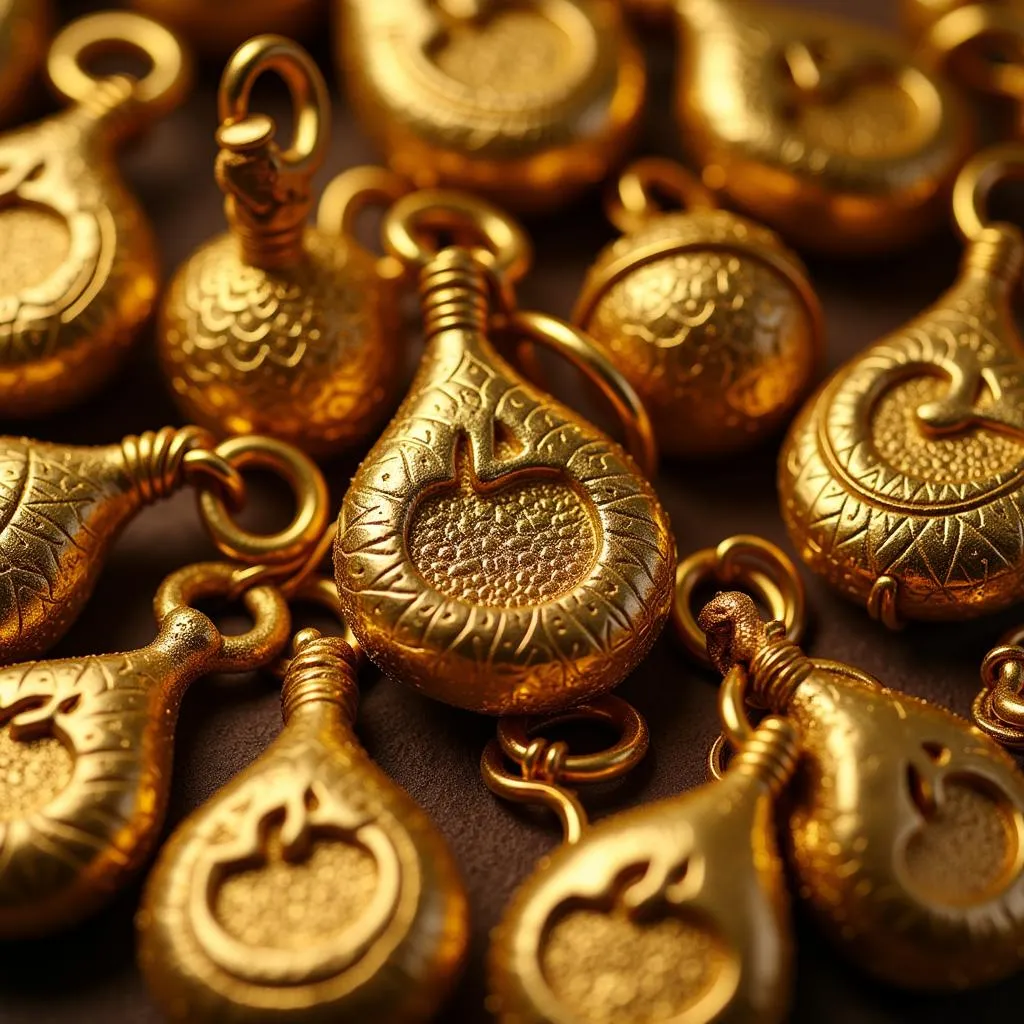Exploring African Deer-Like Species: A Safari Through the Savanna and Beyond
Africa, a continent teeming with biodiversity, is home to a fascinating array of ungulates often mistaken for deer. While true deer are not native to the continent, several species bear a striking resemblance, captivating observers with their graceful movements and unique adaptations. These “African deer-like species” occupy diverse habitats, from the sprawling savannas to dense forests, each playing a crucial role in the intricate web of African ecosystems.
The most commonly encountered deer-like species in Africa belong to the antelope family. These elegant creatures exhibit a remarkable diversity in size, shape, and horn structure. From the diminutive dik-dik to the majestic eland, the antelope family showcases the incredible adaptability of these herbivores to the varied African landscapes. Let’s delve deeper into the world of these captivating animals and uncover their unique characteristics.
Unveiling the Diversity of African Antelope
Antelope, the heart of the “African deer-like species” conversation, represent a vast and diverse group within the Bovidae family. Their graceful forms and often impressive horns make them a captivating sight for any safari-goer. One key distinction between antelope and true deer lies in their horns: unlike deer, which shed their antlers annually, antelope retain their horns throughout their lives. These horns, composed of a bony core covered in a sheath of keratin, vary dramatically in shape and size across different antelope species. The impressive spiral horns of the kudu, for example, are a stark contrast to the short, straight horns of the duiker.
The sheer diversity of antelope in Africa is astonishing. Tiny dik-diks, barely larger than a hare, dart through dense undergrowth, while the massive eland, the largest antelope species, roams the open plains. This variety highlights the remarkable adaptability of antelope to different ecological niches. Some species, like the waterbuck, thrive in wetland environments, while others, like the oryx, are perfectly adapted to arid desert conditions. This diverse range of habitats and adaptations underscores the vital role antelope play in the African ecosystem.
Distinguishing Features of Deer-Like Species in Africa
Beyond antelope, other ungulates contribute to the “African deer-like species” perception. The klipspringer, with its unique hooves adapted for navigating rocky terrain, might be mistaken for a small deer at first glance. Similarly, the chevrotain, also known as the mouse deer, though not a true deer or antelope, shares a similar build and behavior, further adding to the confusion.
 Klipspringer Navigating Rocky Terrain in African Landscape
Klipspringer Navigating Rocky Terrain in African Landscape
Several antelope species, such as the Nyala, exhibit striking sexual dimorphism, meaning males and females differ significantly in appearance. Males often sport larger horns and more vibrant coat colors, while females are generally smaller and more camouflaged. These differences play a crucial role in mating displays and social hierarchy within antelope herds. If you’re interested in learning more about African antelope species, check out our article on african antelope types.
What Makes These Animals so Unique?
The remarkable adaptations of African deer-like species have allowed them to thrive in a wide range of environments. Their diverse feeding strategies, from grazing on grasses to browsing on leaves and fruits, contribute to the overall health and balance of the ecosystem. For example, some antelope species play a crucial role in seed dispersal, helping to maintain plant diversity across the landscape. You can read more about specific antelope species like the african antelope nyala.
The presence of these deer-like animals also supports a complex food web. They serve as prey for large predators like lions, leopards, and African wild dogs, contributing to the delicate balance of predator-prey relationships. The african fighting dog is a formidable predator that hunts antelope. Learn more about the african animal with curved horns and the epic battles between the african crowned eagle vs golden eagle.
Conclusion: Appreciating the “African Deer-Like Species”
From the nimble duiker navigating the dense forests to the majestic kudu with its spiraled horns, the “African deer-like species” offer a captivating glimpse into the rich tapestry of African wildlife. Their unique adaptations and diverse ecological roles highlight the importance of conservation efforts to protect these incredible animals and their habitats for generations to come.
FAQ:
- Are there true deer in Africa? No, true deer are not native to Africa.
- What is the largest “deer-like” animal in Africa? The eland is the largest antelope, often mistaken for a deer.
- What are the main differences between antelope and deer? Antelope have permanent horns, while deer have antlers that are shed annually.
- What are some examples of “deer-like” species in Africa? Antelope, klipspringer, and chevrotain.
- Why are these animals important to the African ecosystem? They play vital roles in grazing, seed dispersal, and as prey for predators.
- What are some threats to these animals? Habitat loss, poaching, and climate change.
- How can I help protect these animals? Support conservation organizations, reduce your carbon footprint, and educate others.
Situations for Common Questions:
- Tourist on Safari: “Are those deer over there?” This presents an opportunity to explain the difference between deer and antelope.
- Student researching African wildlife: “What are the different types of antelope?” This allows for a discussion of the diversity of antelope species.
Further Reading Suggestions:
- Explore more about African predators.
- Learn about the different ecosystems in Africa.
Call to Action: For any assistance or further inquiries, please contact us at Phone: +255768904061, Email: [email protected], or visit us at Mbarali DC Mawindi, Kangaga, Tanzania. Our customer service team is available 24/7.

